Search: Junior Full Lineout 2
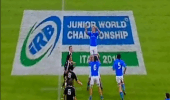
Junior - Full Lineout 2
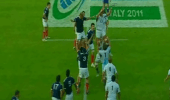 0:17
0:17
Junior - Ball off the top from lineout 2
Junior - Ball off the top from lineout 2
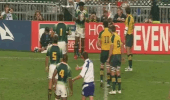 0:31
0:31
Sevens - Full Lineout 2
Sevens - Full Lineout 2
To watch over 2500+ videos join now for free!
JOIN NOW
Men's - Full lineout 2
A 5 man lineout where all the players are spread evenly apart, all players can lift and jump so the focus is on speed and accuracy. Key factors : Even spread of players - Communication - Quick jump - Accuate lifting - Accurate throw in
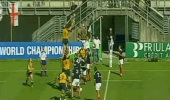
Junior - Full Lineout 1
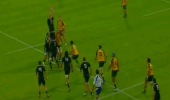
Junior - Short Lineout 2
 0:23
0:23
Junior - 2 v 1 2
Junior - 2 v 1 2

Junior - 3 v 2 2
 0:25
0:25
Junior - 2 v 1 1
Junior - 2 v 1 1
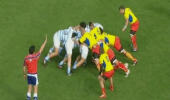 0:19
0:19
Men's - Lineout maul good defence 2
Men's - Lineout maul good defence 2
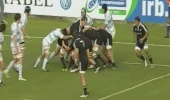 0:32
0:32
Junior - Lineout catch & mail / drive
Junior - Lineout catch & mail / drive
 0:20
0:20
Junior - Wrap Tackle 2
Junior - Wrap Tackle 2
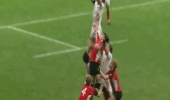 0:36
0:36
Sevens - Full Lineout 1
Sevens - Full Lineout 1
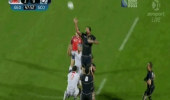
Men's - Short Lineout 2
An example of a shortened lineout
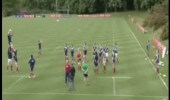 0:29
0:29
Lions 09 lineout 2
Lineout variation and practice
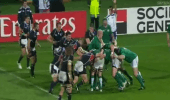 0:25
0:25
Men's - Lineout catch & maul drive 2
An example of setting up a maul after a catch and drive at a lineout
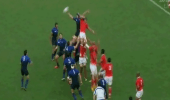
Men's - Ball off the top from lineout 2
An example of playing the ball from the top of a lineout
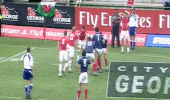 0:38
0:38
Sevens - Full Lineout 3
Accurate skills are the key to lineouts in seven's, a combination of movement, lifting and throw combine to make an effective restart for the attacking team. The shape of the attacking side is pre planned to create a mis - match with a faster player v a slower one. key factors : Pre call the move - Fast feet - Strong core for jumper - Support from both players to lift the jumper - Jumper to jump - Accurate throw - Support he jumper to the ground - Offload pass to scrum half
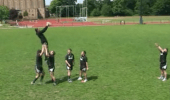 0:09
0:09
Full lineout practice - middle then back
Unopposed practice to develop calls and movement patterns
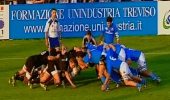 0:23
0:23
Junior - Straight Scrums 2
Two even packs compete at the scrum, good technique creates a good and safe contest. The black team use the platform from the scrum to score a try wide out. Key factors : 8 players working as a unit - Calling - Strong body position - Hips, back and head all facing forward - Accurate binding

Women's - Full lineout
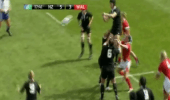
Women's - Ball off the top from lineout 2
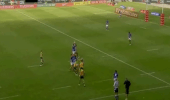
Sevens - Full Lineout 4

Junior - Continuity of play 2

Junior - 3 v 2 1

Junior - Accurate clearing of players 2

Junior - Exiting the 22m 2

Junior - Leg Drive 2

Junior - Good contact body position/ball presentation 2
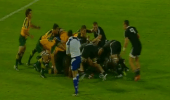
Junior - Collapsed Scrums 2
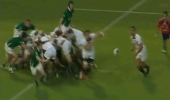
Junior - Wheeled Scrums 2

Junior - Classic Tackle 2

Junior - Strike Moves 2
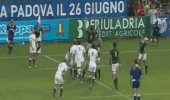
Junior - Short Lineout 1
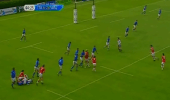
Junior - Patterns of Play 2
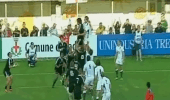
Junior - Ball off the top from lineout 1

Junior - Standard restart with attack winning ball 2

Junior - Support player / Leach 2
 2:15
2:15
Lineout Lifting Fundamentals
Zoran Higgins takes you through the basic lifting fundamentals that all Junior players will have to learn. This focusses specifically on hand placement and body positioning.
11. 6 v 2 v 2 v 2
The Lineout Game - Under13
The under 13 age group uses the full size pitch. The coach should consider that the 5m tram line as a bigger obstacle for a 12 year old thrower, than it is for a 15 year old thrower
To develop lineout understanding, it may be worth exploring for the best thrower and not select their roles at the lineout by shirt numbers
If the policy is to throw to the front at every lineout, how will this develop the tactical and technical understanding of the lineout game?
It may be that possession is occasionally lost, but is the long term development of players more important than any given children’s’ game?
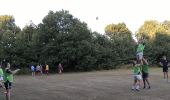 1:50
1:50
Lineout Lifting Basics
The lineout is a key part of rugby union and it is vital for player safety and success that the proper technique is learnt. James Cannon of London Wasps walks through the key technical elements of lineout lifting and jumping. Log in to see the full session.
Lineout Game - Pod Race
This game is also in the level 2 swatch (coaching the 15-a-side game).
When working with players actively lifting and jumping, it is most important to be sensitive to fatigue, primarily for safety reasons
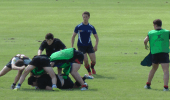 2:15
2:15
Turnover session - 2 Games
A full contact game, conditioned with channels on either side of the pitch. The attacking team must get the ball to both channels before they are allowed to score a try.
This is to spread the attack out, and create more opportunities for turnover ball to occur
Scrum Factory - 2. Tower of Power Demonstration
Good body posture is essential and applicable to all players regardless of age and gender
This posture transfers to the tackle, ruck, maul and in a vertical plain the lineout, so it is important that all players are coached to adopt good posture in contact
 3:50
3:50
Sale - Lineout lifting & set
Coaching junior players to lift effectively in the line out is based upon some simple steps. Ross Harrison from Sale sharks outlines the key principles and progresses to the driving maul
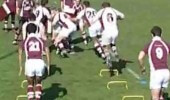 0:21
0:21
6 v 2 v 2 v 2 v 3
Developing the skills into decision making down a channel
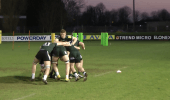 1:40
1:40
Lineout Catch-and-drive
Lineout catch and drive drill
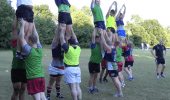 6:20
6:20
Lineout Lifting Fundamentals - Get started
An effective line out is based upon the fundamentals of movement, jumping and lifting. James Cannon from London Wasps takes some amateur players through the basic skills and techniques
Level 2 - Scrum Body Positions
Level 2 - Scrum Body Positions
The Lineout Game - The floor game
The lineout competition is not won and lost when the ball is caught. If the team defending the throw cannot compete in the air, they can subsequently compete on the ground and disrupt the quality of possession the opposition wish to use
 0:16
0:16
Men's - Good body position in contact & ball presentation 2
Men's - Good body position in contact & ball presentation 2
 2:02
2:02
Joe Launchbury - Lineout Tips
England & Wasps Second row Joe Launchbury provides a few tips on the role of the lock and what coaches and players should focus on

Women's - 2 v 3 2
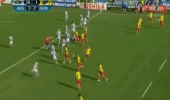 0:20
0:20
Men's - 3 v 2 2
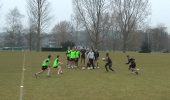 2:59
2:59
Quins Defence - 2 v 2 tackling
A progression from the 1 v 1 drill this exercise adds extra players to make the decision making process more realistic. The coaches can vary the delivery of the ball and the width of the area to put different conditions to the players

Sevens - 2 v 1 2
Step 4 - Introducing the 2 v 2 Scrum
 5:59
5:59
Lineout Throw with Dylan Hartley
Dylan Hartley explains his own approach and routines for throwing into the line out and provides some tips and advice to young players
Level 2 - Back Row Example Clip 2
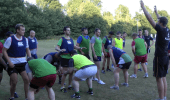 4:41
4:41
Learning to Lift for the Lineout - Get started
Some slightly different progressions in building upon the basic skills for an effective line out
 2:20
2:20
Lineout - Learning To Lift
Learning to lift and work as a pod of three is the foundation of an effective line out. London Irish academy provides some great tips on how to coach this area
 0:17
0:17
Did this Lineout win the World Cup
The black team split the lineout pods at the front and the back, the defence are then forced to move with these pods to compete or stop a driving maul, (As they are close to the try line), this creates a whole in the middle of the lineout which the black team exploit cleverely. This play is clever and tactical and shows how complex the lineout can be. Key factors : Lifting pods to move quickly - Strong jump - Accurate lifting - Accurate throw - Delayed run through the middle
 1:15
1:15
Geoff Parling - Lineout Dominance
Dominant lineout players such as Geoff Parling build their trade on solid technical foundations. Log in to RCD for plenty of coaching tips on lineout technique.
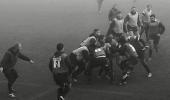 1:02
1:02
Lineout Catch & Drive
Premiership Rugby coaches and players highlight the importance of the lineout as an entry point and an attacking platform. Join PremiershipRugbyCoaching.com for ideas and examples to improve your lineouts.
 2:15
2:15
Passing - 3 v 2 Live Defenders
Gradually progress from 2 static defenders, to 3 v 2 roaming defenders. The first two players must draw their defenders before giving the pass.
 1:18
1:18
Lineout Fundamentals
Dominant lineout players such as Geoff Parling build their trade on solid technical foundations. Log in to RCD for plenty of coaching tips on lineout technique.
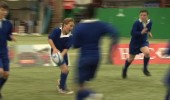 0:26
0:26
3 v 2 in Channel
A development of the 2 v 1 and 3 v1 drills, the attackers now must beat 2 defenders. This requires more decision-making ability as the movements of the defenders could change every time. Players must communicate as well as continue to perform their handling and running skills.
 0:45
0:45
Building the Maul from a Lineout
A maul from a lineout can be a powerful attacking tool. This clip shows how to construct the maul at the front of the lineout quickly. Practice is key to ensure players understand their positioning and timing.
 5:07
5:07
Tackle Technique - Full Session
[WITH DRILL VIDEOS] This session from Joe Goodman (Bristol University Rugby) has been designed to prepare players for a return to full contact competition, re-establishing correct technique to ensure safe, efficient tackling through progressively increasing the level of contact and complexity of skill execution.
The Lineout Game - Defence
Defending against the lineout throw is a key area for disrupting the opposition and their attacking platform. The defending jumper can be very effective by getting a hand in between the opponents’ hands and disrupting the catch. This may also block the vision of the opponent who wishes to follow the flight of the ball
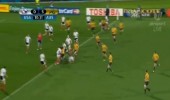 0:17
0:17
Men's - 2 v 1
A good example of phase play to create a 2 v 1 attacking platform. The initial deep pass then creates an overlap and the defender drifts to allow the attacker to run through easily.
Key factors : Quick ball at breakdown - Straight lines of running - Deep pass - straight lines of running again - Loud communication
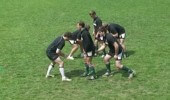 0:59
0:59
Shadowing and movement in the lineout
Lineout practice for developing the movement and lift timing.
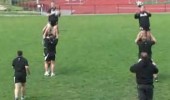 0:24
0:24
Lineout game for speed of lifting
Elite coach Neal Hatley uses a game to develop speed of lifting in a lineout by providing an element of competition and fun.
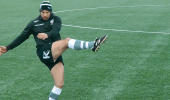 1:28
1:28
Driven Lineout Strategy
The lineout & box kick has become increasingly more important this season, Brian Smith from London Irish explains what "Exits" are and why they are important
 2:13
2:13
Lineout Tips from London Irish Forwards
London Irish forwards talk through some of the elements that make an effective lineout, and how you can prepare for a match.
The Lineout Game - Movement in the line out
It may be that a light, athletic group of players focus on speed over technique, but a bigger group of players may focus on technique in order to maximise height.The tempo and tactics at the lineout needs to suit the player profiles.
 2:15
2:15
Building the Lineout
We have changed the content on this clip - just in the short term - until we produce new content on building the maul from a Lineout - apologies
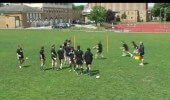 0:33
0:33
3 v 2 in channel
A good progression from the 2 v 1 drill
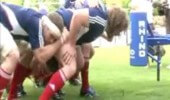 0:39
0:39
Lions - Full scrum practice
Full scrum practice - essential at all levels of the game
 2:52
2:52
Lineout Lifting Hand Placement
This video takes you through the importance of hand placement in building a solid lineout.
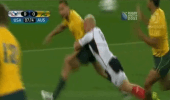 0:15
0:15
Men's - Offloads 2
A counter attack invlving moving the ball wide quickly, then attack defenders with support runners and finally a 2 v 1 to score in the corner. Key factors : Strong communication - Wide spin passes - Attacking the space around defenders - Support the ball carrier from behind - Offload with two hands - straight running - Flat pass
 1:11
1:11
Team patterns from lineout
Some ideas on developing paly from the lineout and progressions
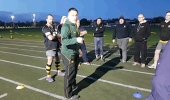 2:11
2:11
Lineout Jumping Fundamentals
Here we take you through the basic and essential core skills required for any jumper in the lineout.
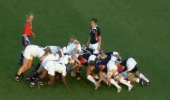 0:16
0:16
Women's - Straight Scrums 2
Women's - Straight Scrums 2
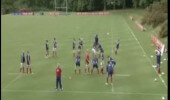 0:23
0:23
Lions 09 Lineout 4
Lineout variation and practice
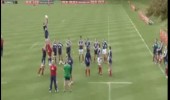 0:17
0:17
Lions 09 Lineout 1
The Lions practice their lineouts
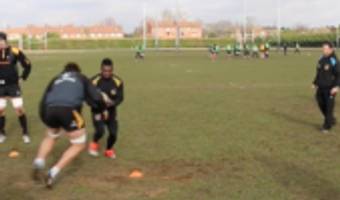 2:18
2:18
Tackling 20 - 2-man Tackle
Tackling 20 - 2 man Tackle
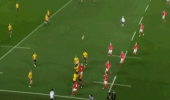 0:21
0:21
Men's - Standard restart with good catch 2
Men's - Standard restart with good catch 2
 0:49
0:49
Mike Catt - Attacking from Lineouts - Dummy Options
Classroom session with Mike Catt - discussing the key points of attacking from a lineout
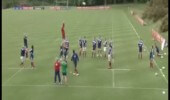 0:23
0:23
Lions 09 lineout 3
Lineout variation and practice
 0:04
0:04
Men's - Lineout maul good defence 1
Men's - Lineout maul good defence 1
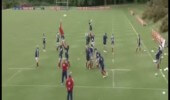 0:26
0:26
Lions 09 lineout 5
Lineout variation and development
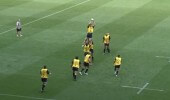 0:34
0:34
Team patterns play from lineout
Developing play from the lineout should have options and progressions
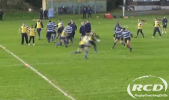 0:46
0:46
3 v 2 and then another defender
Develop decision-making skills in attack. 3 attackers must beat 2 defenders, before facing a third immediately after.
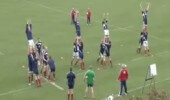 0:47
0:47
Lions 09 - Lineout Movement
A dynamic practise for speed and quality of lifting in lineouts. This exercise can be used for 15's and 7's and for different age groups. The coaches can vary the distance of the cones and progress to both lifters moving. Coaches can add some fun by making it a competition. Key factors : The jumper must jump - Core body strength - Keep body stiff and straight - Lifters work together - Lock out arms - Bring the jumper down safely
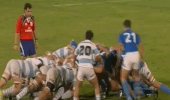 0:15
0:15
Junior - Straight Scrums
Junior Scrums
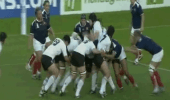 0:20
0:20
Women's - Lineout catch & maul / drive
Women's - Lineout catch & maul / drive
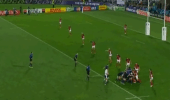 0:23
0:23
Men's - Lineout maul good defence 3
Men's - Lineout maul good defence 3
 1:55
1:55
Lineout essentials
The lineout provides an essential attacking platform. Log in to see advice and examples from pro players, suitable for elite, adult and youth players.

